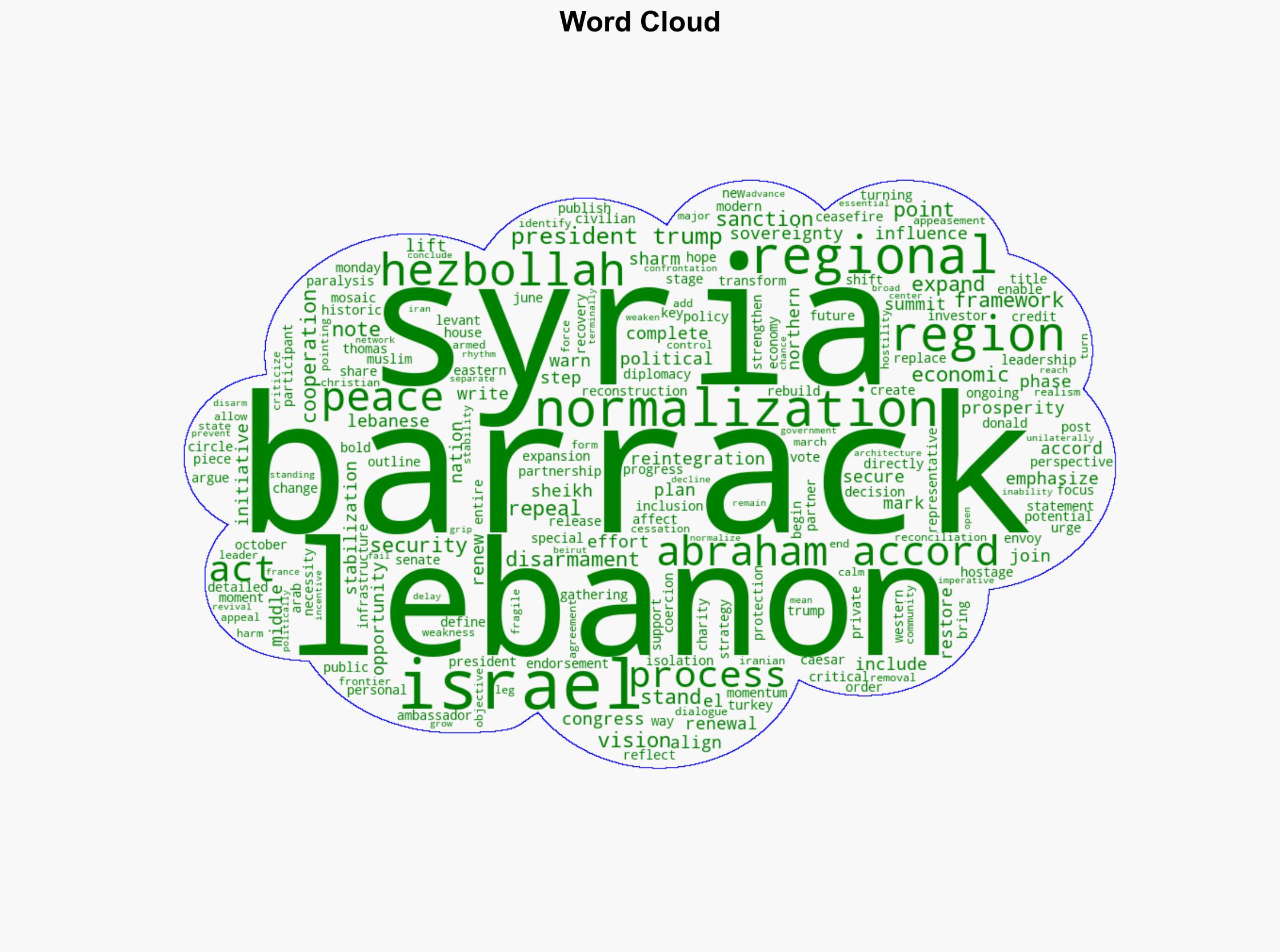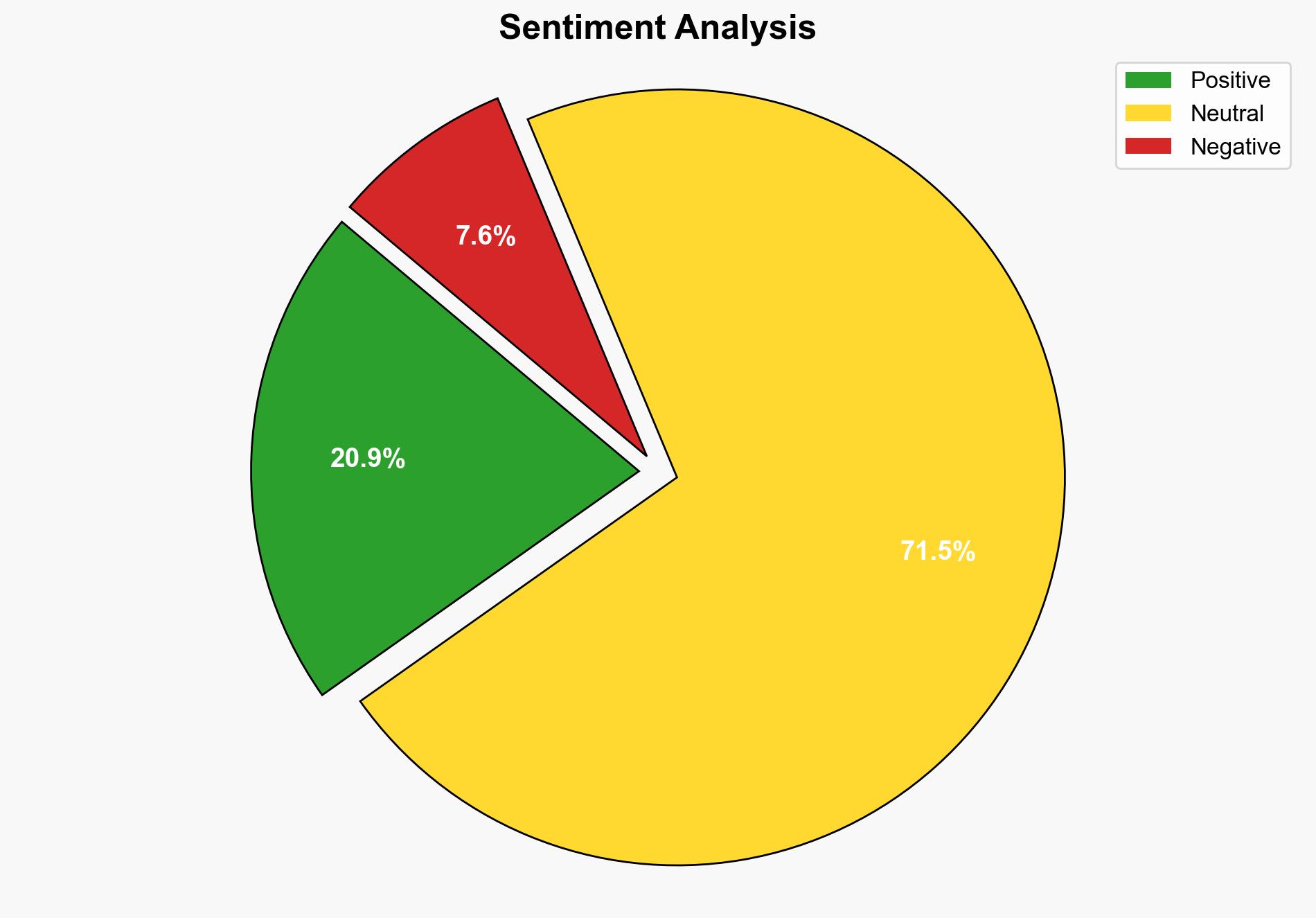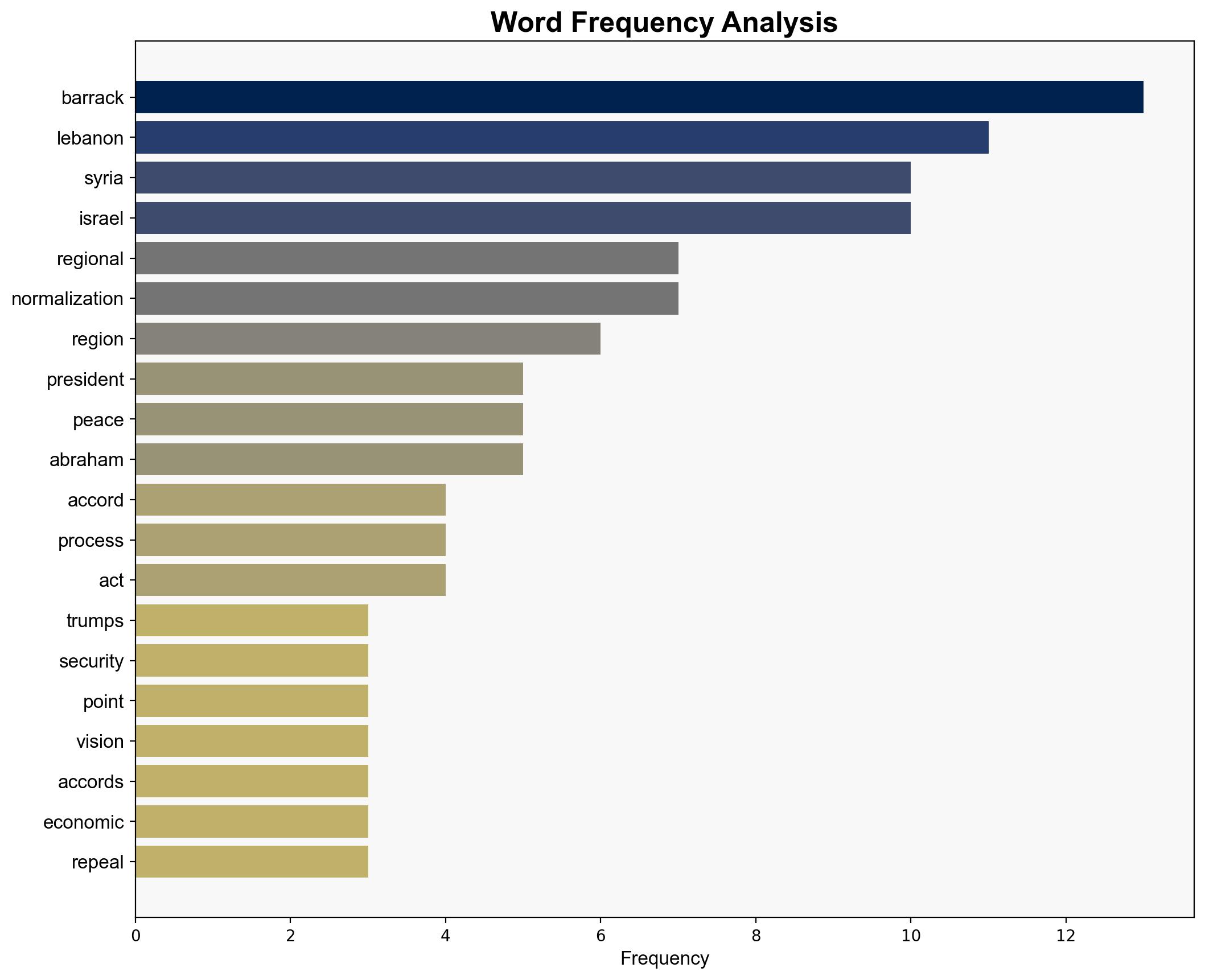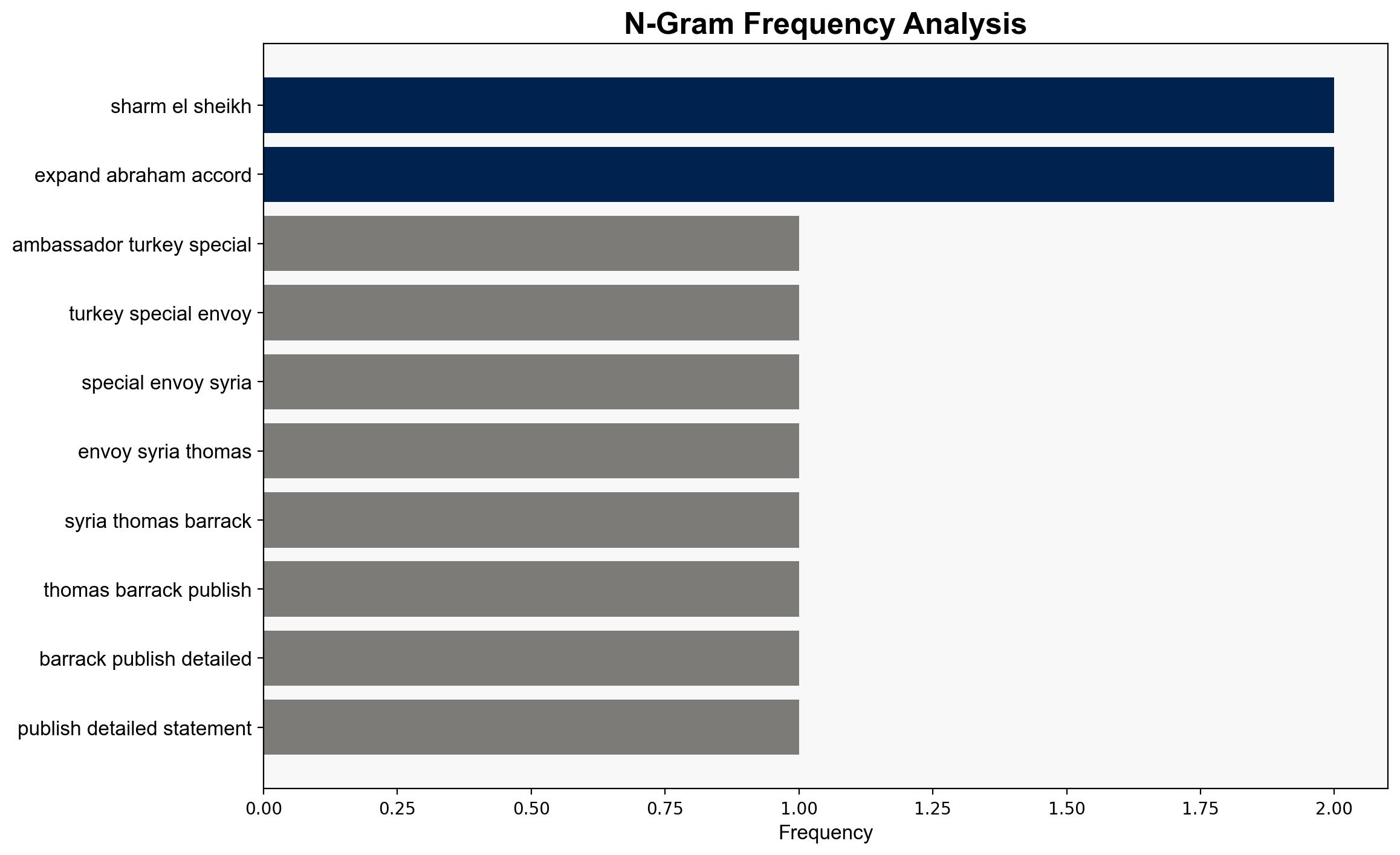Trumps peace plan US Envoy highlights Syria Lebanon and Saudi Arabia – Israelnationalnews.com
Published on: 2025-10-20
Intelligence Report: Trumps peace plan US Envoy highlights Syria Lebanon and Saudi Arabia – Israelnationalnews.com
1. BLUF (Bottom Line Up Front)
The most supported hypothesis suggests that the US peace initiative, led by Thomas Barrack, aims to integrate Syria and Lebanon into a broader regional normalization process, leveraging economic incentives and strategic partnerships. Confidence level: Moderate. Recommended action: Monitor legislative developments regarding the Caesar Syria Civilian Protection Act and assess regional responses to potential shifts in US policy.
2. Competing Hypotheses
1. **Hypothesis A**: The US peace plan is primarily focused on integrating Syria and Lebanon into the Abraham Accords framework, using economic incentives and diplomatic engagement to counter Iranian influence and stabilize the region.
2. **Hypothesis B**: The US peace plan is a strategic maneuver to reduce direct American involvement in Middle Eastern conflicts by empowering regional partners to take the lead in stabilization efforts, thereby shifting the burden of security and reconstruction to local actors.
3. Key Assumptions and Red Flags
– **Assumptions**:
– Hypothesis A assumes that economic incentives will be sufficient to entice Syria and Lebanon to align with the Abraham Accords.
– Hypothesis B assumes regional partners have the capacity and willingness to assume greater responsibility for security and reconstruction.
– **Red Flags**:
– The potential overestimation of regional partners’ capabilities and the underestimation of Iranian influence in Syria and Lebanon.
– Lack of clarity on the specifics of economic incentives and how they will be implemented.
4. Implications and Strategic Risks
– **Geopolitical Risks**: A failure to effectively integrate Syria and Lebanon could lead to increased Iranian influence and destabilization, undermining regional security.
– **Economic Risks**: Economic incentives may not materialize as expected, leading to disillusionment and potential backlash against the US and its allies.
– **Psychological Risks**: Perceptions of US disengagement could embolden adversarial actors and weaken trust among allies.
5. Recommendations and Outlook
- Engage with regional partners to assess their readiness and capacity to lead stabilization efforts.
- Develop contingency plans to address potential Iranian countermeasures.
- Scenario Projections:
- Best Case: Successful integration of Syria and Lebanon into the Abraham Accords, leading to regional stability and economic growth.
- Worst Case: Increased Iranian influence and regional instability due to failed integration efforts.
- Most Likely: Partial success with ongoing challenges in fully integrating Syria and Lebanon.
6. Key Individuals and Entities
– Thomas Barrack
– President Donald Trump
– Hezbollah
– Syrian and Lebanese governments
7. Thematic Tags
national security threats, regional focus, geopolitical strategy, Middle East diplomacy





